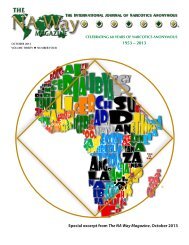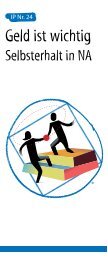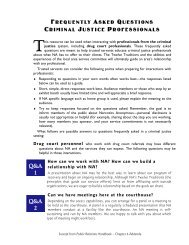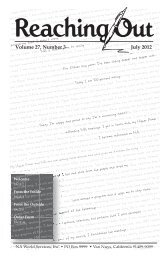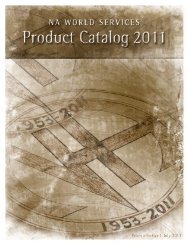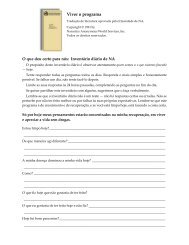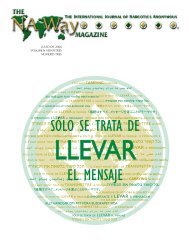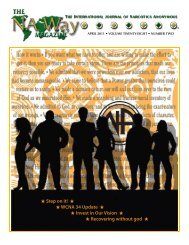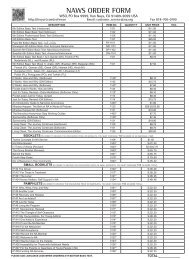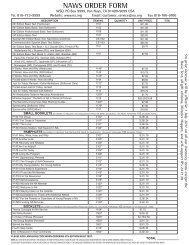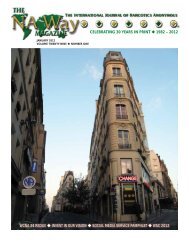Public Relations Handbook - Narcotics Anonymous
Public Relations Handbook - Narcotics Anonymous
Public Relations Handbook - Narcotics Anonymous
Create successful ePaper yourself
Turn your PDF publications into a flip-book with our unique Google optimized e-Paper software.
section, “What we want to communicate about NA,” for examples of talking points).We can make decisions about which points are most important to an audience basedon our dialogue with and research of that audience.We want to be sure that supporting materials reflect what we say in thepresentation. Supporting materials often include NA pamphlets, the fellowshipsurvey, copies of The NA Way Magazine, and whatever else seems appropriate for agiven audience. If local information is available (newsletters, surveys, etc.), then thosematerials would work best at local events. Audiovisual support aides can alsostrengthen a presentation.Remember to keep the format of the presentation flexible. A flexible format willkeep the audience interested and will help create a dialogue. For example, ifmembers of an audience exhibit puzzled looks, then the trusted servants can ask ifeveryone is clear about the information being presented. The presenter may thenneed to explain certain points in a different way or offer new information. This kindof flexibility demonstrates responsiveness and allows for dialogue. Breaking up alarge group for small-group discussions, or using question-and-answer sessions, willallow us to hear back from the public audience.What we want to communicate about NAPracticing what we want to say about NA is crucial in our public interactions. Tobe successful with public relations, we need a consistent, well-crafted message. Wewant to be sure to communicate information like the following to the public:1. A short description of local NA history and NA’s overalldevelopment;2. A description of NA—our primary purpose and our solerequirement for membership;3. The role of the NA group and NA’s traditions (a general overviewabout how groups and service bodies work to forward NA’smessage of recovery);4. NA’s steps—we provide a brief description of the role of theTwelve Steps in recovery. We explain that the steps contain thespiritual principles of our personal program;5. We discuss the name “<strong>Narcotics</strong> <strong>Anonymous</strong>.” We dispel anynotions the audience may have that the word “narcotics” in ourname means NA is only for those who used opiates;6. NA is a spiritual, not religious, program; and7. Where to find NA (phoneline, service office, WSO, website, etc.).Communication also includes outlining what NA can and cannot do. We work tohelp those who are unfamiliar with our program of recovery to understand theprinciples that underlie the actions of our fellowship. We give nonmembers asnapshot of our traditions: principles like cooperation and self-support. We don’tneed the public to fully understand our traditions, but we work toward arelationship with the public that honors our traditions.Providing information about our program of recovery is communication. Weshare information through our written communications, our recovery and serviceliterature, and our presentations with professionals. We do NA a great service whenwe clearly state what the <strong>Narcotics</strong> <strong>Anonymous</strong> program is. We try to avoid makingassumptions that those outside of NA understand our organization. We don’tpromise that NA will work for everyone, but we offer our experience in seeing theNA program work for many people from varying backgrounds and experiences. We34 | Chapter 4 | Preparation & Training



